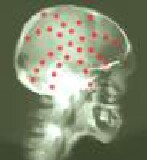
MONDAY, Dec. 27 (HealthDay News) — A new study suggests that one of every 26 people in the United States will develop epilepsy at some point in their life.
That’s a higher rate than previously believed and, experts say, highlights the need for more funding and attention to the condition.
“This study is an important analysis of the potential number of patients of epilepsy in the United States,” said Dr. Joseph I. Sirven, the chairman-elect of the Epilepsy Foundation’s professional advisory board and a professor and chairman of neurology at the Mayo Clinic in Scottsdale, Ariz.
Sirven, who was not involved in the study, noted that it makes two important points:
- Older adults are more at risk for developing epilepsy.
- A greater number of people will develop epilepsy during their lifetime than thought.
“The study suggests up to 12 million Americans will develop epilepsy, which is a greater number than expected,” Sirven said. “Moreover, this is a conservative estimate and not the worst case scenario as the lifetime risk would be higher in more urban areas. Clearly, more attention needs to be paid to this condition.”
The findings are published in the Jan. 4 issue of Neurology.
For the study, Dale C. Hesdorffer, an associate professor of clinical epidemiology at Sergievsky Center at Columbia University Medical Center in New York City, and her research colleagues looked for the likelihood of developing epilepsy among residents of Rochester, Minn., between 1960 and 1979.
They identified 412 people with the disease during that period and calculated the lifetime risk of developing epilepsy at 1.6 percent up to age 50 and 3 percent up to age 80.
Over the years, the lifetime risk increased from 3.5 percent in the 1960-1969 time frame to 4.2 percent for 1970 to 1979, the researchers found.
“Our results highlight the need for more research using epilepsy surveillance data, especially given the aging population in the United States,” Hesdorffer said in a news release from the American Academy of Neurology. “Such surveillance will also provide useful information for health-care planners as they address the service needs of people with epilepsy.”
Dr. Edwin Trevathan, dean of the St. Louis University School of Public Health and author of an accompanying editorial in the journal, said that epilepsy largely goes unnoticed, with only limited data on new cases.
“As a result, we do not have good data to inform decisions made by our health leaders, and some of our best researchers are analyzing data that are 30 to 50 years old,” Trevathan said in the news release.
He urged additional congressional funding so that the U.S. Centers for Disease Control and Prevention can collect needed data.
“Epilepsy has a major impact on public health,” Trevathan said. “A national approach to monitoring epilepsy trends is desperately needed in order to monitor the impact of improvements in epilepsy care, to identify problems with epilepsy care that need to be corrected and to provide up-to-date data for researchers.”
More information
The U.S. National Institute of Neurological Disorders and Stroke has more on epilepsy.

